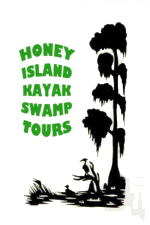EXPLORING THE ENIGMATIC HONEY ISLAND SWAMP: LOUISIANA’S PRISTINE MARSHLAND
Nestled in the eastern reaches of Louisiana’s St. Tammany Parish, the Honey Island Swamp stands as a testament to the state’s natural wonders. This marshland, encompassing an area over 20 miles long and nearly 7 miles across, is a captivating mosaic of biodiversity. Let’s embark on a journey into the heart of this remarkable ecosystem, uncovering its geographical features, unique history, and the mysteries that shroud its depths.
Geographical Marvel: The Boundaries of Honey Island Swamp
The Honey Island Swamp finds itself ensconced within the Pearl River wildlife management area, a vast expanse managed by the Louisiana Department of Wildlife and Fisheries. Bordered by U.S. 11 to the north, Lake Borgne to the south, the Pearl River to the east, and the West Pearl River to the west, this swamp is situated in a geographical tapestry that marries land and water seamlessly.
Its location within the Pearl River wildlife management area ensures its preservation, making it one of the least-altered river swamps in the United States. This designation highlights the importance of conservation efforts in maintaining the pristine nature of this unique ecosystem.
A Sweet Moniker: The Origin of “Honey Island”
The intriguing name, “Honey Island,” is not just a whimsical moniker; it carries a historical significance. Legend has it that the swamp earned its name from the abundance of honey bees once flourishing on a nearby isle. This connection to the natural world and its denizens adds a touch of enchantment to the swamp’s identity.
Wildlife Sanctuary: Biodiversity in its Purest Form
Regarded by many as one of the most pristine swampland habitats in the United States, the Honey Island Swamp is home to a diverse array of flora and fauna. Encompassing 70,000 acres, with 35,619 acres officially designated as a permanently protected wildlife area, the swamp serves as a haven for countless species.
Its untouched state provides a sanctuary for a myriad of wildlife, from elusive avian species to the vibrant ecosystem thriving beneath the water’s surface. The conservation efforts invested in the swamp ensure the perpetuation of this haven for generations to come.
Legends and Mysteries: Tales of the Honey Island Swamp
Beyond its ecological significance, the Honey Island Swamp has woven itself into the fabric of local legends and tales. Stories of pirates, ne’er-do-wells, robbers, murderers, and other unsavory characters have become part of its lore. These narratives, echoing through the cypress trees and murky waters, add an element of mystery to the swamp’s allure.
The swamp is not only a repository of historical legends but also the purported home of a cryptid creature, often described as a large, bipedal, ape-like humanoid. Similar to the legendary Bigfoot and the Skunk ape, sightings and tales of this mysterious being have added a layer of intrigue to the already enigmatic Honey Island Swamp.
Preserving the Enchantment: Conservation and Management
The Louisiana Department of Wildlife and Fisheries plays a crucial role in the conservation and management of the Honey Island Swamp. Their efforts ensure that this natural treasure remains untouched by excessive human interference, allowing its ecosystems to thrive and its mysteries to endure.
As we delve into the depths of the Honey Island Swamp, we not only witness the marvels of nature but also recognize the responsibility to protect and preserve these pristine environments. The delicate balance between conservation and exploration ensures that future generations can continue to unravel the secrets of this captivating marshland.
In concluding our exploration, the Honey Island Swamp stands not only as a geographical marvel but as a symbol of Louisiana’s commitment to preserving its natural heritage. The legends and mysteries woven into its fabric add an air of mystique, inviting adventurers and nature enthusiasts alike to immerse themselves in its timeless allure.
Quoting the valuable information from various sources, including the Louisiana Department of Wildlife and Fisheries, this journey into the heart of the Honey Island Swamp is an ode to the wonders of untouched nature.
